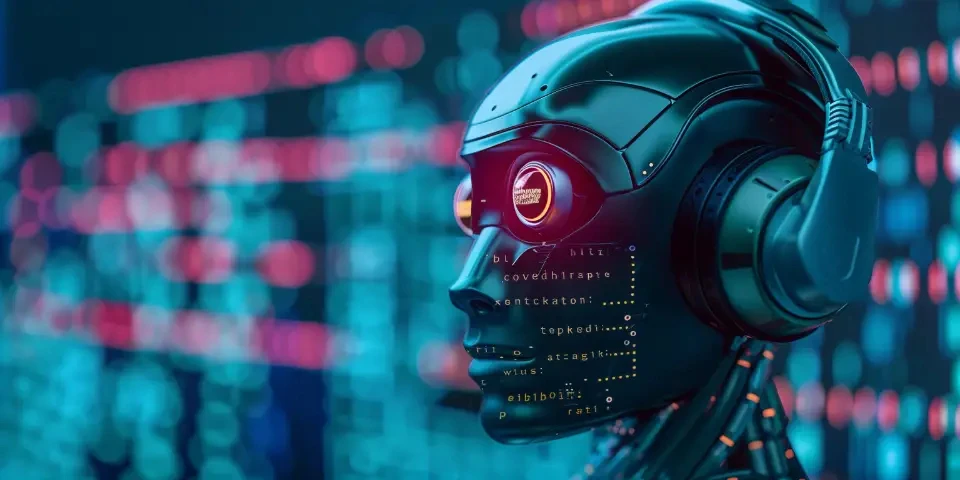Breaking Barriers AI Chatbots Bridge the Gap in Cross-Cultural Communication
As the world becomes increasingly interconnected, the ability to effectively communicate across cultures has become a crucial skill. However, language barriers, cultural differences, and misunderstandings often hinder successful interactions. Fortunately, Artificial Intelligence (AI) chatbots are emerging as a powerful tool to bridge this gap in cross-cultural communication. By harnessing the capabilities of AI, these chatbots are able to understand, analyze, and respond to diverse cultural contexts, enabling individuals from different backgrounds to connect and understand each other better. In this article, we will explore how AI chatbots are breaking barriers in cross-cultural communication and revolutionizing the way we interact.
1. Overcoming Language Barriers
One of the most significant challenges in cross-cultural communication is the language barrier. AI chatbots equipped with natural language processing capabilities can understand and respond to multiple languages, facilitating seamless conversations between individuals who don't share a common language. These chatbots employ advanced translation algorithms, allowing users to communicate in their preferred language while receiving real-time translations in the language of the other person.

Moreover, AI chatbots can also assist in language learning. By interacting with the chatbot, users can practice their language skills in a supportive environment. The chatbot can provide instant feedback, correct mistakes, and offer a personalized language learning experience tailored to the user's needs.
2. Cultural Context Sensitivity
Understanding cultural nuances is crucial in effective cross-cultural communication. AI chatbots are designed to be culturally sensitive, recognizing and responding to different cultural norms, values, and customs. They can adapt their communication style and language to align with cultural expectations, ensuring that interactions are respectful and culturally appropriate.
For example, in some cultures, direct communication is preferred, while others value indirect or implicit communication. AI chatbots can be programmed to recognize and adjust their responses accordingly, making conversations more comfortable and natural for users from different cultural backgrounds.
3. Enhancing Intercultural Communication Skills
AI chatbots can act as virtual intercultural communication trainers, helping users develop essential skills for interacting with individuals from diverse backgrounds. These chatbots can simulate realistic cross-cultural scenarios and provide guidance on appropriate behavior, language usage, and cultural norms. By practicing with the chatbot, users can improve their intercultural communication competence, enabling them to navigate various cultural landscapes with confidence.
4. 24/7 Support and Accessibility
AI chatbots are available round the clock, providing instant and convenient support to individuals seeking cross-cultural communication assistance. Unlike traditional language assistance services that may have limitations in terms of availability or response time, AI chatbots ensure accessibility whenever needed. Whether it's resolving language queries or facilitating cross-cultural exchanges, these chatbots offer real-time assistance, making communication more efficient and accessible to a broader audience.
5. Empowering Business Interactions
In today's globalized business landscape, cross-cultural communication plays a crucial role in establishing and maintaining successful partnerships. AI chatbots can revolutionize business interactions by providing multilingual customer support, assisting with international negotiations, and offering localized marketing campaigns.
For instance, online platforms like "ChatBuddy for Business" provide businesses with AI-powered chatbots that can greet customers, answer frequently asked questions, and offer support in multiple languages. Such chatbots enhance the customer experience by ensuring effective communication, building trust, and strengthening relationships with customers from diverse cultural backgrounds.
6. AI Chatbots vs. Human Interpreters
While human interpreters have traditionally been relied upon for cross-cultural communication, AI chatbots offer several advantages. They can process information faster, handle a larger volume of conversations simultaneously, and are immune to fatigue or burnout. Additionally, AI chatbots provide privacy and confidentiality, eliminating potential concerns that sensitive or personal information might be shared during translation.
However, it's important to note that AI chatbots are not intended to replace human interpreters entirely. They are most effective in situations where immediate responses are required, or when human interpreters may not be readily available or affordable.
7. Potential Challenges and Ethical Considerations
While AI chatbots offer significant benefits, there are also important challenges and ethical considerations to address. Chatbots must be carefully designed and trained to avoid reinforcing stereotypes or biases. Developers must ensure that the data used to train the chatbot is diverse and representative of various cultures to prevent unintentional cultural favoritism or misrepresentation.
Furthermore, privacy and data security concerns must be addressed to protect users' personal information and ensure compliance with relevant regulations. Adequate measures should be implemented to prevent unauthorized access or misuse of data collected during cross-cultural interactions.
8. The Future of AI Chatbots in Cross-Cultural Communication
AI chatbots have the potential to revolutionize cross-cultural communication in the future. As technology advances, chatbots will become more sophisticated, adaptive, and capable of understanding complex cultural cues. Innovations, such as emotion recognition and sentiment analysis, will enable chatbots to respond empathetically, further enhancing the quality of cross-cultural interactions.
In addition, integrating AI chatbots with existing communication platforms and social media networks will facilitate seamless and widespread cross-cultural communication. Individuals will be able to communicate effortlessly with anyone, regardless of language or cultural background, fostering greater understanding and collaboration on a global scale.
Frequently Asked Questions:
Q: Can AI chatbots interpret non-verbal cues in cross-cultural communication?
A: Currently, AI chatbots primarily focus on text-based communication. However, advancements in computer vision technologies may allow chatbots to interpret non-verbal cues, such as facial expressions and body language, in the future.
Q: How accurate are AI chatbot translations?
A: AI chatbot translations have significantly improved in accuracy due to advancements in natural language processing. While they may not be 100% perfect, they are generally reliable for everyday conversations, providing users with a good understanding of the content being translated.
Q: Can AI chatbots understand local dialects and accents?
A: AI chatbots can be trained to understand and interpret various dialects and accents. However, the accuracy of their understanding may vary depending on the quality and diversity of data used for training.
Explore your companion in WeMate